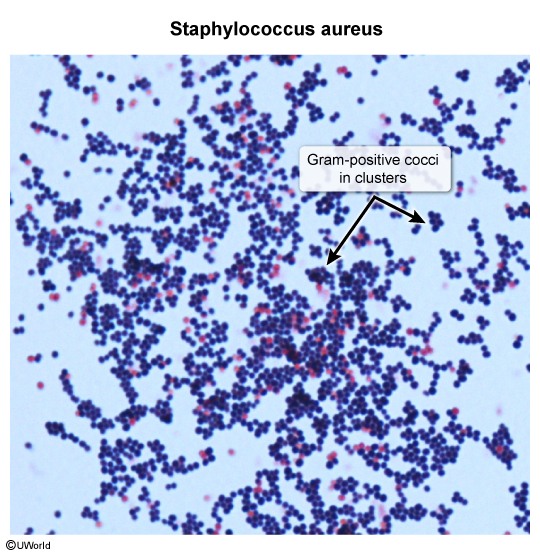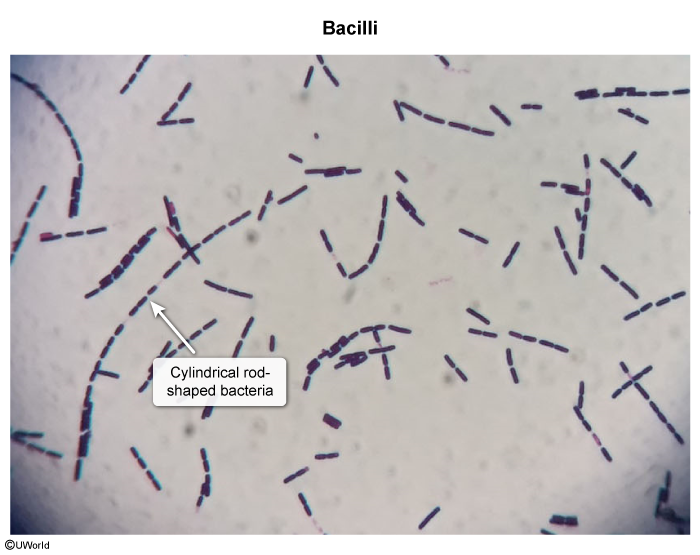Basic Bacteriology: Structure, Virulence Factors, And Genetics
Article Sections
Introduction
Bacteria are single-celled microorganisms that lack an enveloped nucleus and have no membrane-bound cytoplasmic organelles. They are classified largely by staining characteristics (eg, gram-positive/negative), shape (eg, cocci, rods), arrangement (eg, chains, clusters), growth characteristics (eg, aerobic, anaerobic, facultative), and biochemical features.
Gram stain
Gram staining is one of the most common ways to broadly classify bacteria. In this technique, bacteria are affixed to a slide, stained with crystal violet and iodine, and then exposed to a solvent (eg, ethanol, acetone) (Figure 1). Gram-positive bacteria retain the stain (due to having a thick cell wall) and appear purple; gram-negative bacteria lose the stain (due to having a thin cell wall) and appear pink. Additional information about the surface structure of gram-positive and gram-negative organisms follows (
Continue Learning with UWorld
Get the full Basic Bacteriology: Structure, Virulence Factors, And Genetics article plus rich visuals, real-world cases, and in-depth insights from medical experts, all available through the UWorld Medical Library.
Figures
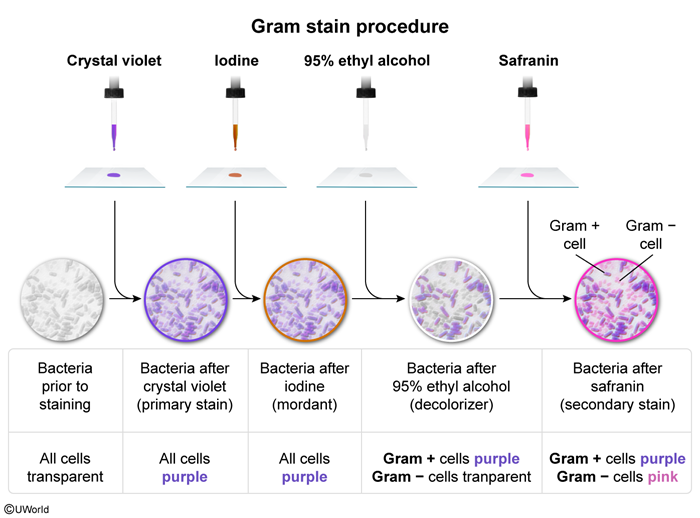
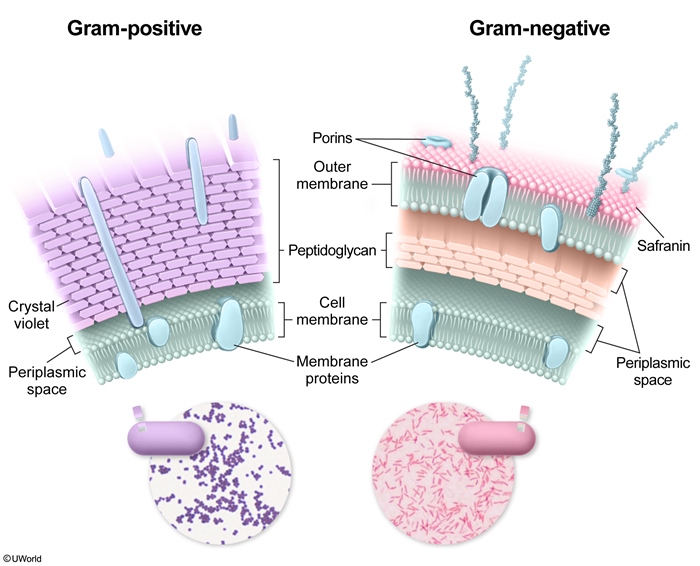
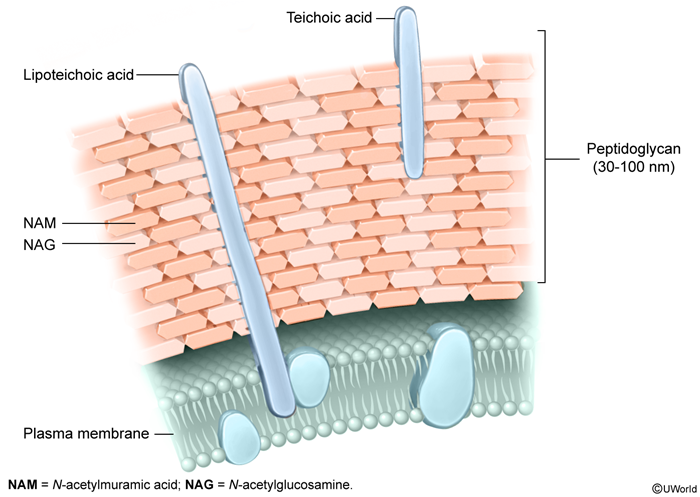
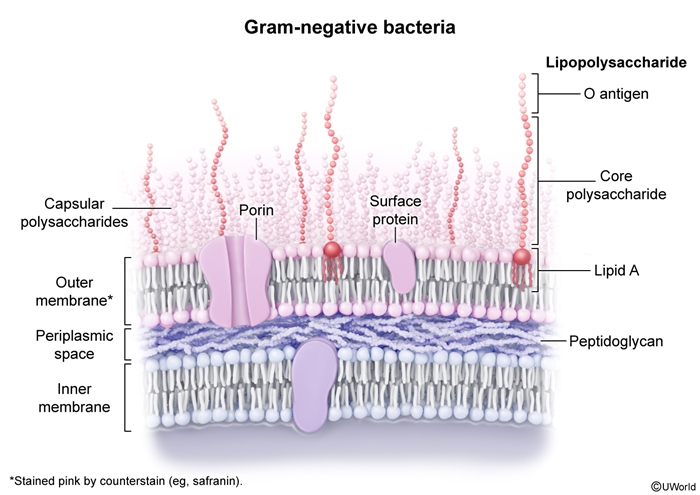
Images
